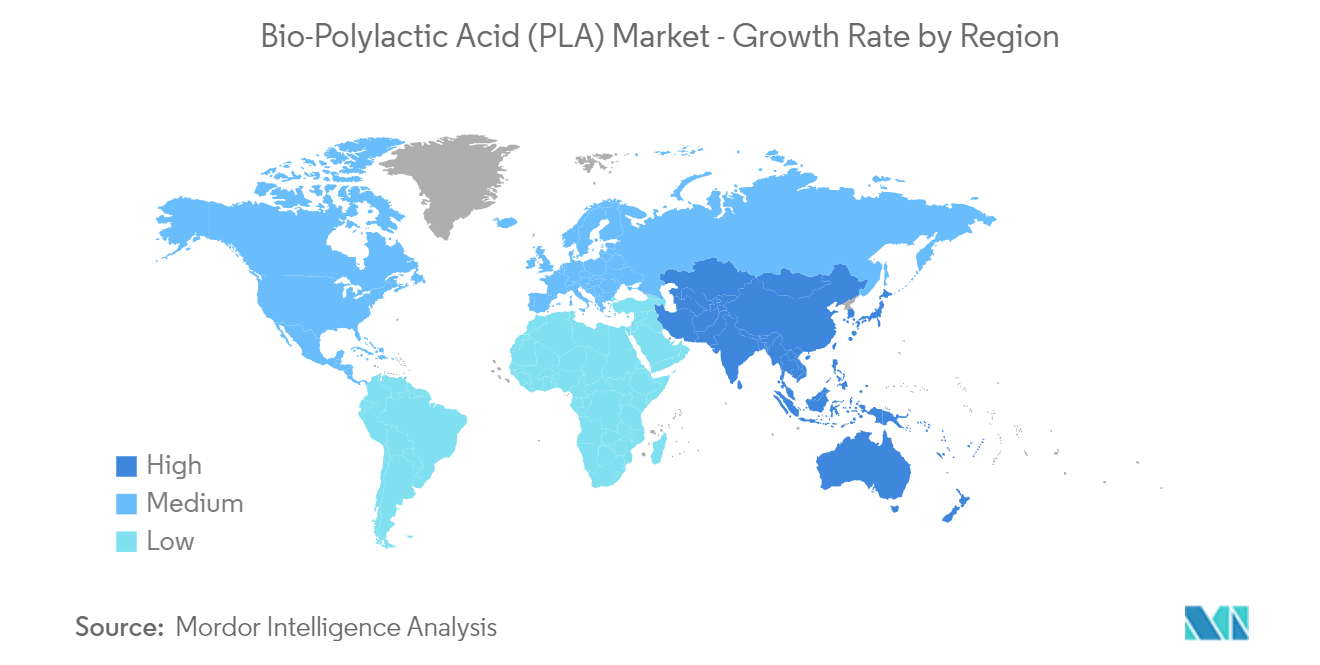Market Trends of Bio-polylactic Acid (PLA) Industry
The Packaging Segment is Expected to Dominate the Market
- The packaging industry is one of the largest consumers of bio-PLA. Packaging accounted for a little over 68% of the bio-PLA market in 2021 in terms of revenue. Moreover, concerns about hygiene and food safety in the context of the pandemic have become a higher priority globally.
- As per the Indian Institute of Packaging, the packaging consumption in India has increased by 200% in the past decade, rising from 4.3 to 8.6 kg per person per year. Nonetheless, China dominates the sector and is the largest manufacturer and exporter of packaging materials and products globally.
- The demand is expected to increase for dietary supplements, such as vitamins, and essential supplies, such as allergy medication. Moreover, environmental and climate change concerns are driving countries worldwide to choose biodegradable packaging materials.
- Bio-PLA is primarily used in fruit and vegetable packaging in supermarkets and for bread bags and bakery boxes, bottles, envelopes, display carton windows, and shopping or carrier bags.
- The restaurant chains and food processing industries are increasingly adopting biodegradable materials for food packaging. People are also becoming more aware of how safe food is, since some plastics are known to cause cancer.
- The post-lockdown numbers indicate a systemic shift in consumer purchasing preferences from offline to online. Customers around the world are getting more and more used to shopping online, which is expected to increase demand in the PLA market over the next few years.

China is Expected to Dominate the Market in Asia-Pacific
- China is the largest economy in the Asia-Pacific region and has one of the largest manufacturing and production bases in the world.
- In the country, the packaging industry is witnessing tremendous growth due to the plastic ban and shift toward sustainable and biodegradable packaging. Thus, it is expected to drive the market during the period.
- Furthermore, the Chinese food processing industry is moving toward maturity and experiencing moderate growth. Processed and packaged frozen food products are increasingly popular, especially dairy, baby food, and confectionery products, which is a driver for the food processing industry.
- According to the National Bureau of Statistics of China, in 2021, the food industry in China generated a total profit of about 618 billion yuan (USD 88.5 billion). The food manufacturing industry contributed approximately 179.1 billion yuan (USD 26.6 billion) to the total profits.
- China is the largest textile-producing and exporting country in the world. The textile industry of China grew steadily in 2021, with collective profits of 267.7 billion yuan (USD 38.20 billion), a 25.4 percent increase year-on-year (YoY), according to the Ministry of Industry and Information Technology (MIIT).
- In 2021, the health expenditure was approximately CNY 7.2 trillion, accounting for 7.1% of the country's GDP. The medical and therapeutical market in China has witnessed strong growth due to a growing number of hospitals and the increasing demand for medical assistance. Thus, advancements in medical applications are expected to drive the market during the forecast period.
- Furthermore, according to ZVEI Dia Elektroindustrie, China's electronics industry will be worth approximately EUR 2,500 billion (USD 2635 billion) in 2021, accounting for more than 50% of global production, and is expected to grow at 14% and 8% Y-o-Y in 2022 and 2023, respectively.
So, the bio-polylactic acid market in Asia-Pacific is likely to be led by China over the next few years.


